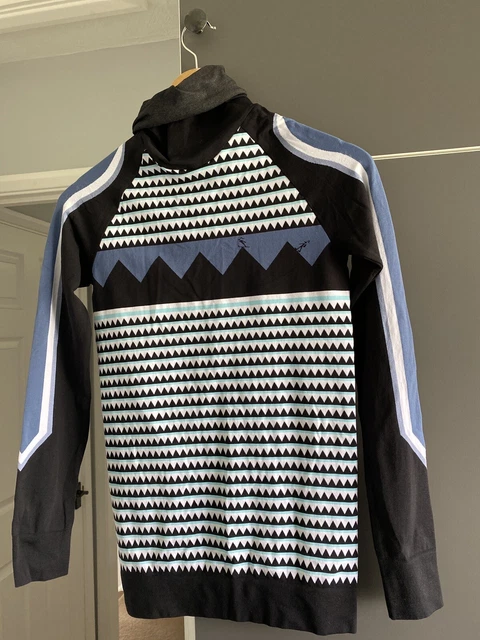Both Merino wool and yak wool have natural temperature-regulating properties due to the unique characteristics of their fibers. They help to keep a temperature at a moderate level by adjusting their fibers in response to changes in the climate. Merino Wool and Yak wool are natural temperature regulators.
Merino Wool
Merino fibers are naturally wavy or crimped, creating air pockets within fabric. These air pockets are insulation which trap warm air close to the body in cold weather and also provide thermal insulation.
Merino has the ability to manage moisture. Merino is able to take in moisture vapour that is absorbed by the human body and release into the surrounding air. The "wicking" process is what we refer to it as. This is also known as "wicking."
Merino fibres allow for good airflow. This breathability prevents overheating because it allows excess heat to be able to escape while maintaining a comfortable temperature.
Merino wool is both hydrophilic, (water-attracting), and hydrophobic. Due to its dual nature, it is capable of efficiently regulating the level of moisture.
Yak Wool
Yak wool is naturally hollow and creates air pockets. They provide great insulation by trapping warm air near the body.
Insulating Properties. Yak Wool fibers due to their unique structure and ability to hold in air, are ideal for cold climates. The hollow cores of the fibers offer an additional layer for insulation.
Moisture Wicking. Similar to Merino Wool Yak Wool is able to wick water off your skin, and keep you cool while working out.
Temperature Regulating- The insulation of yaks wool regulates body's temperature by stopping the loss of heat in cold conditions. The fibers keep a warm microclimate near the skin.
Both Merino wool and yak wool's temperature-regulating properties are a result of their natural structure, which creates a balance between warmth, moisture management, and breathability. They have characteristics that make them suitable for different conditions, ranging from extreme cold to environments with more variability. The ability to adjust to changing temperatures helps you remain comfortable all day as well as during outdoor activities. Read the most popular base layer for skiing examples for website info including best women's thermal underwear for skiing, cordova ski base layer, obermeyer base layer womens, womens ski underlayer, best baselayers for skiing, ski touring layering, best long underwear for women skiing, sweaty betty ski layers, funky ski base layers, base layer under snow pants, and more.
[img]https://www.thelatitude.life/cdn/shop/articles/Stylish_Womens_base_layers_for_Winter_2020_1600x.png?v\u003d1570551641[/img]
What Is The Base Layering System That Will Let You Adjust Your Ski Clothes Based On The Weather And Activity?
The base layering system is designed to enable your clothing to be adaptable and flexible to the changing weather conditions and activities. They have several layers with different purpose that work together to keep you safe and comfortable while you ski. This is the way you can alter your ski clothing by using base layers.
Base Layer
The base layer is the one that's closest to the skin. It's responsible to manage moisture and regulates temperature.
In colder weather, you can keep warm by wearing a moisture-wicking underlayer (made out of Merino wool or yak hair).
If temperatures increase or your activity level rises, a breathable base layer stops you from overheating by allowing the excess heat to escape.
Mid Layer
The midlayer is a source of warmth as well as insulation. It retains the body's heat and serves as a barrier to cold air.
If it is cold, choose a thicker mid-layer. If the weather is mild you can choose a less thick one or no mid-layer altogether. Select a more substantial layer for more cold weather. For milder temperatures, you can opt for a lighter one or not have a mid-layer in the first place.
Outer Layer -
The outer layer is often called the shell. It shields against wind, rain and snow.
When the weather is rough or rainy, you can add a waterproof and windproof shell to keep you dry and protected from the elements.
In warmer climates, you could consider a light jacket that will provide wind resistance and insulation but not be too heavy.
Adjustability-
The adaptability of the base layering system allows for easy adjustments. You can easily add or remove layers with ease as you change your activity or weather.
You could, for example put on layers if you get up in the morning cold and then prepare to go downhill skiing. Once you're done with the exercise and begin to warm up, you can remove the layer in the middle.
Versatility-
These systems can be adapted to various outdoor activities, not just skiing. Similar principles can be applied to mountaineering and hiking.
Comfort and Performance
It is possible to maintain your body temperature by changing the layers. This can prevent the body from overheating and chilling.
This degree of temperature control enhances your overall performance and lets you focus on enjoying your activity.
Remember that the effectiveness of a base layering system depends on choosing appropriate materials for each layer, as well as knowing your body's requirements and the weather conditions you'll be facing. Making sure you invest in high-quality base, middle and outer layers made to meet the particular requirements of skiing and other outdoor activities is crucial. Have a look at the recommended one-time offer for merino wool base layers for blog examples including merino 250, merino half zip baselayer, merino undershirt, smartwool 250 pattern, icebreaker merino oasis 200, merino wool thermal vests, kari traa baselayer merino wool, 100 percent wool long underwear, smartwool classic base layer, merino wool long underwear women's, and more.

